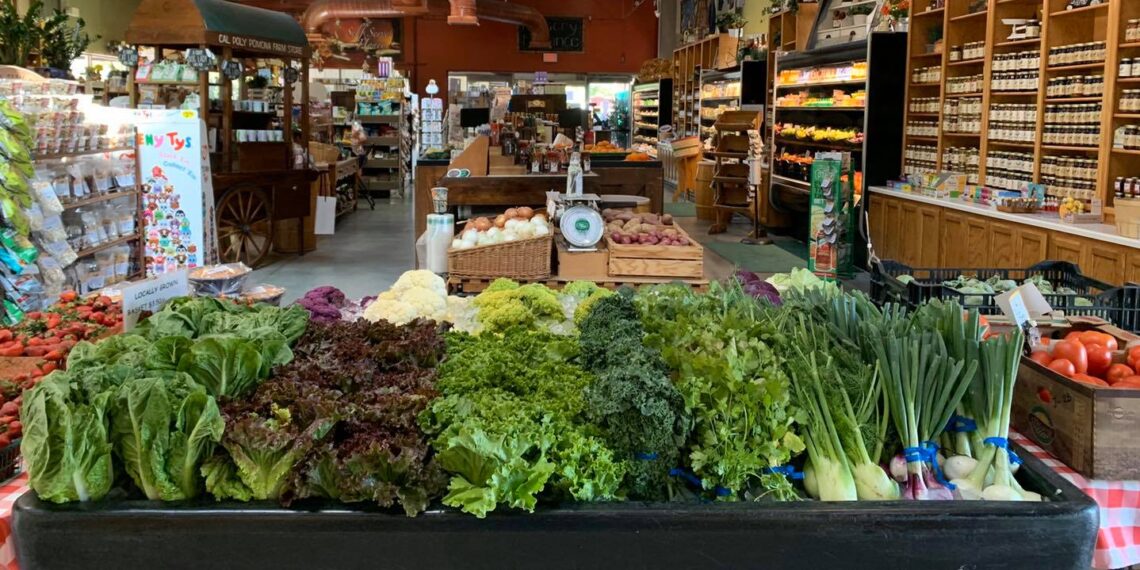
10 More Changes I’ve Made to Live More Sustainably
Towards the end of last year, I shared a list of 10 changes I had made in my personal life to live more sustainably. Well, I didn’t stop there and I am ready to share with you 10 more habits, swaps, and/or changes I have made to try to live more sustainably –
1. Grey Water Recycling / Rain Water Collection
The husband and I are nowhere near perfect with this yet, but recycling our grey water, and well really any water we can, has been one of our biggest challenges, but most rewarding. This process is still evolving and we still haven’t found the best system for our life, but we are improving upon it constantly.
If you don’t know what grey water is, grey water is relatively clean wastewater from baths, sinks, washing machines, and other kitchen appliances. Grey water isn’t clean enough to drink or cook with but can be used in other ways, like watering your garden and/or lawn.
Although we still haven’t worked out a system to collect water from washing our dishes, we have started collecting water from our showers. While we are still trying to figure out a more effective way, we have started collecting some grey water and/or access water from our showers in two different ways. One way we often collect extra, normally wasted water, is by simply putting a bucket in our shower and letting it collect all the “cold” water that would normally just wash down the drain, while we wait for the water to come to temperature. (Now I know that isn’t technically grey water, but it’s same vein of effort.) The second way we collect grey water is by plugging the shower drain while we shower and then pumping that water into a bucket. The husband found a cheap little pump at The Home Depot that we use to transfer the water.
Just to try to save and reuse as much water as possible, we have also started collecting water from drained pasta and potatoes when we cook, and the water we soak and store our lettuce in.
Lastly, in our current water waste saga, we have started to collect rainwater, sort of. Now it doesn’t rain here in Southern California very often, so we haven’t had the opportunity to collect too many times since we started doing this, but we did get hit with at least two pretty decent storms so far this year. During the first storm, we were not prepared. We had not thought things through and at the last minute, we just ran outside with some empty buckets, small trash cans and large bowls. We filled everything up and then started thinking how we could do that better.
When the second storm came around, although it still is not even a halfway decent system, we armed ourselves with two large trash cans, a few empty storage bins and placed them strategically around the house. We filled everything up!
Rainwater collection is something the husband has talked about for a long time, but I think we finally got inspired by watching one of our favorite garden influencers, Epic Gardening. He lives down in San Diego and has a crazy system, it’s inspirational. For now, we are probably going to just continue winging it, when it comes to collection, but in the future, when we have our own place, this is definitely going to be something we want to do even better, with gutters and practical storage.
So if you haven’t already made your own assumptions, you may be wondering what we are doing with our grey water and rainwater? Well, we use it in the garden. Since we can’t store the grey water we usually just toss it on the small lawn we have or in one of the thirstier planters/beds we have. If we haven’t watered yet for the day, we’ll start with the grey water before we move on to the hose.
Same goes for the rainwater, except we can store it. After the second storm, we ended up collecting enough water to water our entire garden for about a week. It was amazing!
2. Upcycling Glass Jars
Now this one may sound like a no brainer, but oddly enough until recently, I had not been doing this. I have started collecting, saving and reusing glass jars that I come across. In this house, it is mostly pasta sauce and jelly jars, but they are great! Although I still have a lot of plastic storage bins, which I plan on using ’til they die, I’ve added glass jars to the mix using them to store leftovers, homemade sauces, used oil and well you get the point.
Right now, I’m even using an upcycled jar to hold all my dishwashing and straw cleaning brushes on the kitchen counter.
We do live in a small space, so I can’t save all of them, but the decent sized ones that clean up well, I make sure to snag before they end up in the recycler.
3. Cal Poly Farm Store
In my last sustainable changes post, I said that in the future I plan to utilize farmers markets and buy more local produce and I have finally taken that first step. Although I by no means buy all of my produce from the Cal Ploy Farm Store I do make a solid effort to do so. I try my hardest to exclusively buy my avocados and citrus from Cal Poly, the quality over the local grocery store is insane. And I haven’t used store bought honey in months. When it comes to all my other produce needs its difficult to stick to only Cal Poly, since they don’t always have what I need for the week’s meals, and they are a bit of a drive for me, but when it does work out, I buy from them.
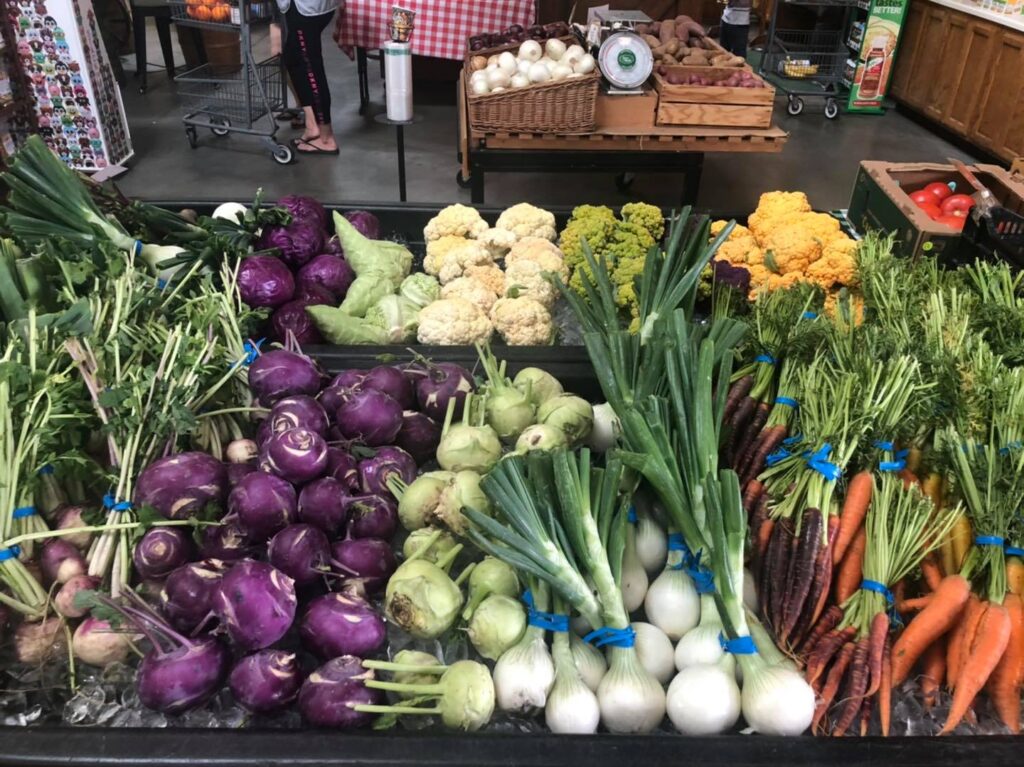
4. Staying Closer to Home
I like to drive and I like to be in the car. I also have store locations I prefer over others and that means that over the years I have developed a bad habit of driving past perfectly good grocery stores, that had everything I need, just to go to the “better” location. Over the past few months, I’ve really made a conscious effort to stop that.
Of course, there are times when the stores around me might not have what I’m looking for and I may need to drive a little bit farther to get something, but I try my best not to drive farther, just because I want to kill some time or I want to go to the “nicer” store. If I want to or need to go to the farther locations I try to lump them in with other needs or stops.
For example, the Walmart and the Home Depot the husband and I prefer to go to happen to be on the way to my mom’s place. There also is an Armstrong over that way. So whenever I need to take my mom groceries or pick up laundry from her I use that trip to stop into Walmart or Home Depot or Armstrong for anything I may need. On the days where I’m not going to be headed to my mom’s we just stick to the local stores.
Same goes for eating out. If there is a special occasion or something we are really craving we may drive a little farther, but for our every day, I’m too lazy to cook moods, we make sure to just stick to what’s immediately around us.
5. Selling Lightly Used Goods
Did you know that on average over 80% of all textiles end up in landfills?
Even if you are taking the time pack up and donate your clothes and other slightly used items to thrift stores like Goodwill or the Salvation Army, that doesn’t mean those items are going to actually get a second life back in the community.
I’ve always been big on donating old clothes and things to Goodwill. At least annually, usually more often than that, I will go through my closet and my home and collect all the things I no longer use. I would pack them up and drop them off at the local Goodwill. But then I started learning more about textile waste, fast fashion, and the potential downside to donating.
Now don’t get me wrong, donating lightly used items is still great, way better than just throwing them away. At least when you donate, that item has a chance at a second life. And I will admit I will still donate on occasion, but it’s not my automatic first go to.
When I have clothes and items I no longer need or want, I now try to take the time to post them on websites like Facebook Marketplace or OfferUp. If I’m not getting any bites, I’ll drop the price a few times. Still not selling? I’ll then just post it on my personal profiles and ask if anyone wants the items. If I still can’t find my item in question a home I will then donate it, or if it’s a furniture item, I might drag it out to the curb and see if anyone picks it up.
6. Being a More Thoughtful Consumer
I’m not just being more careful about what I do with the items I no longer need, I’m also trying to be more considerate of the items I bring into my life and that means multiple things.
- I’m trying not to mindlessly buy. I’m a cheap person in general and I don’t like spending money on anything usually, but there are some things I fall for pretty easily, like notebooks. As I write this I can look around the room I’m in a spot at least seven unused notebooks. When it comes to buying things I try to take a minute, pause and think, “Do I really need this?” or “Do I already have something at home that serves the same purpose?” I am in no way living a minimalist life and I still buy things I don’t need, but I’m trying to do better. Just because I find a really cute notebook with an awesome inspirational phrase or a sarcastic coffee mug, I don’t need to buy those things when I still have perfectly good working items at home.
- I try to look at where a product is made or where it is coming from before I buy, and although I will admit, I don’t do this with everything, it is something I’m trying to do more and more. If the price is fairly comparable I’d much rather buy a product made here in California or the West Coast versus the East Coast or overseas. This most recently came into play while the husband was looking into buying a new water bottle. He found three brands he was interested in, one from the East Coast, one from overseas and one made right here in California. All were considered sustainable brands with good credentials and all of them cost about the same. How’d he make his decision? He went with the one made here in California.
- This third point only applies to sustainable and eco-friendly products. As The husband and I try to transition into a more sustainable eco-friendly life, where feasible for our current situation, we’ve started looking at and slowly moving towards brands and products that advertise and promote themselves as sustainable, but as we are quickly learning, you can’t take those claims at face value. Every time we look into a new product or company we are learning that it is important to not just trust when they say they are sustainable or eco-friendly, but actually take the time ourselves and look into the actual footprint and sustainability of the product, as well as the practices of the company. Again, as I’ve said over and over, and as I will continue to say, we are in no ways perfect at this and we sometimes miss things or get lazy, but it is an important step in our buying habits that we are trying to implement the best we can.
7. No More Nail Polish or Makeup
Now unless you personally know me, this one may sound like a crazy change, but really it’s not a change at all more a decision I have made to face reality and live in that reality. I am not a person that has ever really worn makeup on been into makeup. I like doing my eyebrows and eyeliner and some mascara, but that’s about it. It’s part I’m not very good at it and part I’m too lazy to really care.
Despite being lazy and not very good at it, my entire adult life I would have these urges to get good at it. I’d decide, I’m going to “be a girl” and I’m going to start wearing makeup. I’d go to the store, buy eye shadow and foundation and concealer and lipstick. I’d start watching how to videos and I’d start wearing makeup and that would last for a week, maybe a month if I was really dedicated, and then I’d start to lose interest. I’d stop wearing makeup and the products would sit in my bathroom until they were way past their expiration date and I’d end up throwing away more than half filled products. Very wasteful, I even realized that at the time.
So like I said, when it comes to makeup, this isn’t really a change more of an acceptance of who I really am and permission to stop trying to make something work for me that I don’t really care about. (But I will still be buying and wearing my mascara, eyeliner and eyebrow pencil.)
Nail polish is a slightly different story for me. Now I don’t remember what influencer or Youtuber I was watching, but one day they mentioned nail polish and how wasteful nail polish is and that really hit me because they were right. Yes, they are glass bottles, usually, but the brushes are plastic and even if you take packaging out of the equation, when have you ever finished a nail polish bottle? Me, personally, never. And I love painting my nails. I have always had a huge collection of polishes and when life permits, I was the person that would change my nail color weekly. I never liked paying for a professional manicure, I felt like I could save that money and do it myself at home, but I’ve decided no more.
Yes, I still love painting my nails, but it is a pretty wasteful habit in my opinion for my current lifestyle. I spend all my free time in the mud, in my garden. At work I am unpacking boxes and pulling out merchandise. My hands take a beating on a daily basis and nail polish has no chance. Before I made this decision I had very little time to paint my nails anyway, but when I would they would look nice for an evening and then the next day I would smack something at work or I’d repot something in the garden and they’d be trashed.
I totally support and understand anyone that uses makeup or nail polish, they just aren’t for me right now.
8. Bamboo Toothbrush
It is estimated that over 1 billion toothbrushes end up in landfills annually and the average person goes through about 300 toothbrushes in their lifetime. And what are most toothbrushes made out of?
Plastic.
So that means a ton of plastic is ending up in landfills and oceans just from our oral hygiene habits. Well, the solution to that is pretty simple and I’m surprised I didn’t make this change sooner.
The two easiest ways you can cut down your plastic waste when it comes to your toothbrush is by –
- Choosing a brush with a replaceable head. You’ll still be producing plastic waste, but nowhere near the rate of a traditional brush.
- Switch to a bamboo brush.
I choose option two. Bamboo brushes don’t cost much more than traditional plastic brushes, they work the same way, last just as long and are biodegradable. It was an easy swap for me.
9. Re-Using Black Pots
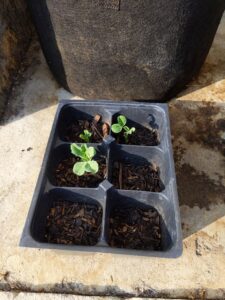
The husband and I garden A LOT. And although we are starting to try growing things primarily from seed, we still buy and have bought a lot of seedlings and all of those seedlings come in little (or big) plastic black pots.
Rather than just tossing those out, we have started to collect and reuse them. They are great to use when we need to move our seedlings from their seed tray, but they aren’t quite ready to go into their own grow bag or the ground. We also use them to start larger seeds like our sunflowers and zucchini plants. They also come in quite handy when we want to sell or give away some of our seedlings.
The pots we can’t use or won’t use or when we simply have too many go to Home Depot for their recycling program.
10. Menstrual Cup
This was probably the biggest and scariest change I’ve made in the past few months. It’s also oddly enough the one I most want to talk about, yet am most scared to talk about. Because this is already turning into a pretty lengthy post, I will try to keep this point brief and maybe consider making an entire post solely dedicated to the mensural cup.
Since this post is about sustainable switches I have made, rather than talking about why this switch worked for me and why I really feel the need to tell other women about it, I’ll just focus on the sustainability aspect of this switch, since that is why I initially wanted to make this swap anyways.
The average American woman will have to deal with their period for around 40 years. If a woman’s period lasts around five days that equals about 2,400 days over the course of a lifetime or about six and a half years. That’s a lot of time bleeding and that all has to go somewhere. Most women rely on tampons, pads or a combination of the two. With that in mind, it is estimated that around 20 billion pads, tampons and applicators are dumped into North American landfills every year. That’s a lot of waste and a lot of money. The average woman spends anywhere from $150 to $300 a year on feminine hygiene products. That’s $6,000 on the conservative end.
To save money and the help reduce my waste I made the switch to a menstrual cup. It was very scary and intimidating at first and it took me almost a year to finally make the switch, but I’m so happy and wish I would have done it sooner.
Menstrual cups range in price from under $20 to over $50 and last years, lifespan varies from brand to brand. Although the initial price may be steep, in the long run you are saving a lot of money are a lot of waste.
Bonus Failed Swap – Plastic Free Deodorant
Despite all the progress I made, there was one swap I attempted to make and failed at. I tried to switch to a plastic-free deodorant and it did not work for me. The brand I tried did not work at all, I was smelly within a few hours, and I don’t normally smell. Also, the application was bothersome and irritating to my skin. I only tried one brand, so I’m not writing this swap off yet, but it is a fail for me as of this moment and probably for the next few months.
Sustainable Habits for the Future Pt. 2
As with my last 10 changes post, I want to leave you with some of my future sustainable plans –
- Safety Razor: This is a change I want to make and even my husband has been pressuring me to make. Although it scares me, not only will it save me money and reduce my waste (hmm sounds like my menstrual cup situation), I’ve also heard that it is a nicer, less irritating shave. I have no excuse on why I haven’t made this switch yet, other than I’m scared, but hopefully, that will be changing very soon.
- Laundry Detergent: From strips to tabs to soap nuts (?) there are a lot of eco-friendly laundry detergent options. Only problem is they are still really pricey. Every few months I seem to find myself falling into the rabbit hole of sustainable laundry detergent because I hate buying those big plastic bottles every other month, but I have yet to find an alternative that fits within my lifestyle and budget. Hopefully, as sustainability becomes more important to more people, more options will start to become available and/or prices will start to drop and I can make that switch. Or hopefully, somewhere in the near future I will find myself in a better financial situation and can splurge on some green detergent.
- More Sustainable Meal Prep Containers: Switching to more sustainable meal prep containers is a swap I am ready to make, it is just not the time yet. Prior to me really becoming concerned with my plastic consumption, I loaded up on plastic meal prep containers and well they still work perfectly fine. I will continue to use my plastic containers until they slowly die off and then I will start to replace them with plastic-free alternatives.
Cover Image by Cal Poly Farm Store Facebook via https://www.facebook.com/CalPolyPomonaFarmstore/



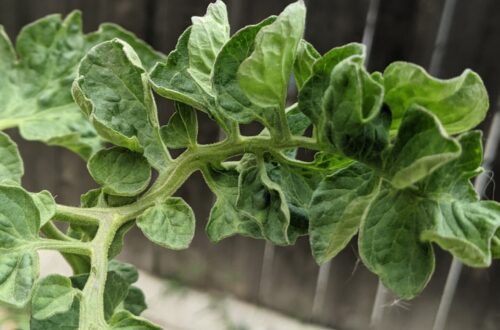
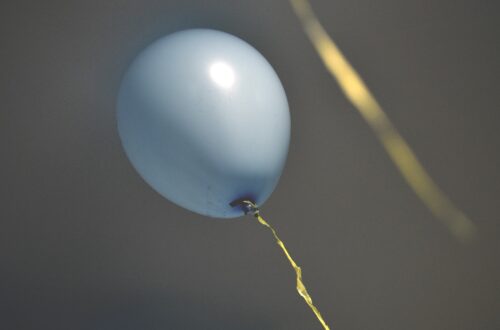
4 Comments
Pingback:
Pingback:
Pingback:
Pingback: